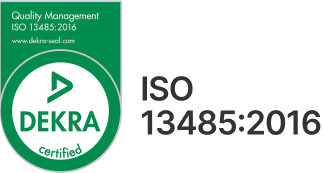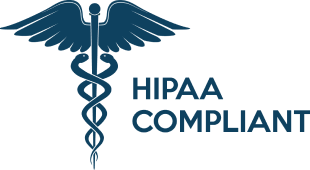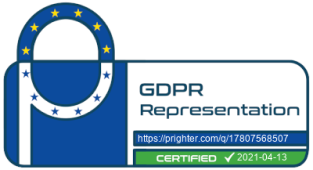Why is Stress Measurement so Important in Workplace Wellness?
Prioritizing wellbeing has become an essential part of the workplace, a trend that was growing even before COVID-19, and has been accelerated as a result of the pandemic. According to Mark Foster, senior VP of IBM, “The COVID-19 pandemic challenged many leaders to focus on what’s essential, like their people. Many employees’ expectations of their employers have significantly changed. The ‘anywhere’ workforce can require leaders to provide agile technology, to adopt more empathetic leadership models that prioritize employee well-being.”
But how can today’s employers take this seriously, and manage the growing issue of stress in the workplace in an impactful and measurable way? Let’s deep dive into this important issue.
To watch the webinar that inspired this blog post, please go here.
What is Stress, Really?
“I’m so stressed!” We all say it, but when does it stop being something normal at work, for example when you’re working towards an important deadline, and tip over into a more serious problem, like when you’re thinking about quitting your job or seeing detrimental health effects? To get the answer to this, we need to understand what stress really is.
At its core, stress is a physical reaction, a chemical reaction in the body that allows us to protect ourselves. During stress, your heart rate increases, your breathing quickens, your muscles tighten, and your blood pressure rises. This all happens to prepare us for ‘fight or flight’, in a dangerous situation.
Not all stress is equal. We all experience acute stress regularly, when we slam on the brakes of our car to avoid a collision, when we have a fight with our partner, or even in an exciting situation like on a rollercoaster or when competing in sporting events.
However, chronic stress is more serious, and can quickly turn into long-term anxiety if it isn’t managed. By the time we get to chronic stress, we may have been living in a bad situation for a while, whether that’s in or out of the office. It could be a troubled marriage, money problems, or unhappiness in the workplace. We may not even be aware of the source or the effects of the stressor, but our bodies certainly are, and we’re not just talking about emotional reactions. According to the author, Dr. Jay Winner, “Stress doesn’t just make us feel awful emotionally. It can also exacerbate any condition you can think of.”
As well as making existing illnesses worse, signs of stress can also be physical. Think about issues such as fatigue, insomnia, irritability, depression, loss of appetite, headaches, weak immune system, stomach issues, and more. These can all be attributed in many cases to stress. It’s no wonder that WHO calls stress “the silent killer.”
Managing Stress as an Employer
Looking to reduce stress in the workplace has some obvious benefits, and also more hidden benefits, too. Of course, it’s important to support your staff, boost morale, and make positive changes that reduce stress levels amongst your staff. That’s just about building an empathetic and supportive workspace for your employees.
However, if you look at the numbers, it also makes smart business sense. The WHO comments that for every $1 USD that is invested in treating conditions such as depression and anxiety, there is a fourfold return on that investment in your employees’ ability to work and in their productivity.
This is because the ramifications of workplace stress are huge, and thought to cost American businesses alone, up to $300 billion each year. This is a combination of sick days, low productivity, missed deadlines, and issues getting on as co-workers and collaborating. In extreme cases, it can also cause problems such as violence at work. To look at just one issue, as much as 40% of job turnover is attributed to stress, a huge cost for today’s organizations.
There are also indirect financial benefits that have been measured over time, made easier to gauge by the increase in workplace wellness programs that among other things, work to reduce stress levels and anxiety. One study for example looked at the stock performance of companies that scored highly on the HERO Employee Health Management Best Practices Scorecard, as a result of evidence-based workplace health initiatives. These companies had a portfolio that appreciated by 235% over the testing period, in comparison to 159% for the control group. Another similar study found that companies with outstanding wellness programs outperformed the S&P 500 over 14 years by 325% to 105%.
How to Measure Stress Effectively in the Workplace
It’s important to note the use of the term “evidence-based” in the study we mentioned above of wellness programs that improved performance. Traditionally, stress management is measured by questionnaires, which have a number of problems.
Subjective results: As we have mentioned, chronic stress cannot always be measured or even recognized by the sufferer, so questionnaires that ask employees to rate their stress levels are likely to be inaccurate.
Pressurized: Employees who like their workplace or who fear retribution or judgment might not be honest about how they truly feel, even if they recognize that their stress levels have risen or are a problem, and even if questionnaires are anonymous.
Focused on cause: Many workplace stress questionnaires ask questions around the cause of the stress, for example, a heavy workload, or a feeling that the employee’s contribution isn’t being taken seriously. Work/life balance today is increasingly blurred, and no matter where the stress comes from, it impacts people everywhere, and so it’s important to target it and try to reduce it.
Not standardized: It’s impossible to know from a questionnaire whether employees are more or less stressed than the rest of their teams. Answering questions will change depending on your personality type, and even one person could answer a question differently depending on their mood.
Today’s Employers Urgently Need a Consistent, Standardized Way to Measure Stress in the Workplace
Growing stress levels during COVID-19 have put this issue firmly in the spotlight, and they can no longer be ignored. Mental health is at a critical juncture and has been extremely negatively impacted by the pandemic by as much as 40% of people. As employees continue to work from home, will they feel that for their employers, it’s ‘out of sight, out of mind’?
The truth is, that today’s employers need to find smarter ways to measure stress, and to onboard the ‘agile technology’ that IBM says today’s employees demand to meet this challenge.
Binah.ai is that technology, the only tool available today for end-users to accurately and affordably monitor mental stress levels, directly from every employee’s smartphone device. Besides five mental stress levels, the technology measures heart rate, respiration rate, blood pressure, and Heart Rate Variability (HRV), the very vital signs that align with a rise in stress levels. By using this app, employees can get a better understanding of their stress levels over longer or shorter periods of time, without adding subjectivity or emotions into the mix, and employers can accurately monitor stress levels, even in a distributed workforce.
Employees simply take a short video of the upper cheeks or forehead region of their face with the selfie camera of their smartphone. They can also use a laptop camera while working, or a tablet camera, if they don’t have a smartphone available. Our measurements have been rigorously tested against medical equipment, and are in the process of being given FDA and other regulatory approval as a medical device.
To support stress measurements and management directly, Binah.ai’s technology uses Baevsky’s approved stress index, globally known to calculate accurate mental stress levels using heart rate and heart rate variability. We present these results with a simple 5 stage score, from low, through to very high, making it easy for any user.
Ready to Reduce Stress in your Workplace? Here’s How it Works
If you’re an employee looking to augment a wellness program with stress management, Binah SDK is a perfect choice to integrate into your own wellness application, with implementation taking just a few days from end to end. We have an SDK for Android, iPhone, Windows, and Linux too.
Our comprehensive analytics, history, and trends reports will allow you and your employees to monitor stress over periods of time, providing relevant, real-time, and meaningful insights that can trigger timely, life-changing, or life-saving intervention and treatment. Sometimes a slight change in lifestyle, a couple of days off, some help from a colleague, or a reshuffling of the workload and priorities can make a huge difference by releasing a lot of steam and helping an employee come out of a stressful situation that feels like a dead end.
If you’re a smaller business, or you don’t have a wellness application in mind, you can use Binah Team, which is a ready-to-use SaaS platform and end-user application, with no integration needed, and a per-user business model for affordability and easy scalability. No matter which option you choose, you’ll get real-time health data from a centralized dashboard, and intelligent analytics so you can make the right smart business decisions about your workplace stress levels.
Don’t ignore stress – it has huge implications on your employees’ wellbeing, their productivity and ultimately the success of your business as a whole. Help your team tackle damaging stress, in time.
Get in touch to schedule your demo of the Binah.ai solution for wellness.

 close
close





